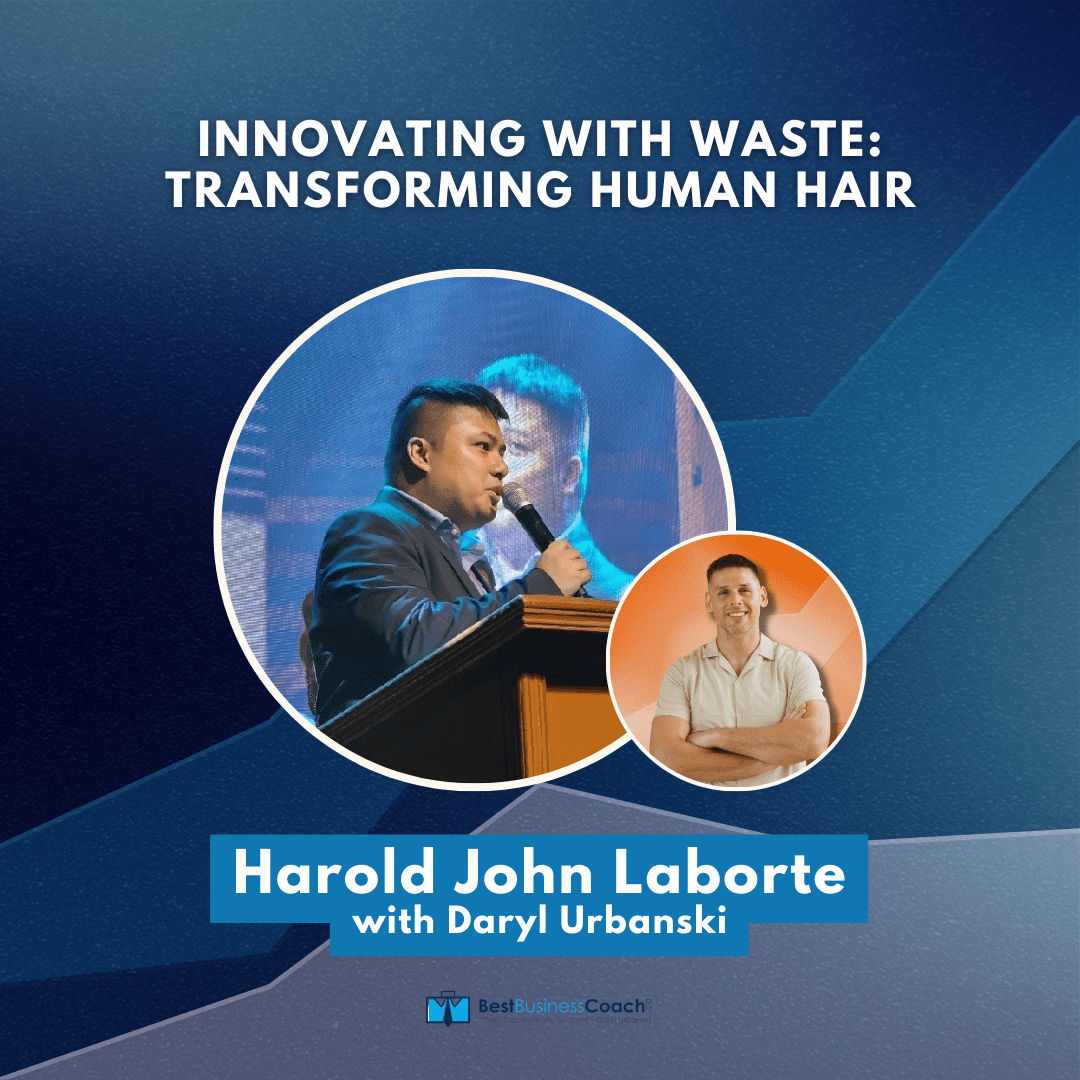Daryl Urbanski and Harold John Laborte discussed the potential of human hair as a valuable resource for various industries, including sustainable packaging, agriculture, and environmental impact. They shared their experiences and insights on how human hair can be transformed into valuable products, such as raw materials for manufacturing, and how this approach can help reduce waste and pollution. They also explored the use of human hair as a sustainable alternative to synthetic plastics in oil absorption and as a fertilizer, highlighting its biodegradable nature and natural, slow release of nitrogen. The conversation emphasized the importance of advocating for this cause and taking action to reduce waste and pollution.
Resources
- You may connect Harold John Laborte on LinkedIN
- You may connect on his website Capilli Trading inc.
- Capilli Trading Inc on LinkedIN
- For more Informative Interviews Click Here.
Episode Highlights
Transforming waste human hair into valuable products
- Harold John Laborte, founder of Capillary Trading, shares his story and insights on innovation and sustainability.
- Harold's business venture, Capillary Trading, transforms waste human hair into valuable byproducts for industries like agriculture and fashion.
- Harold John Laborte discovered alternative to plastic packaging using human hair in high school.
Using human hair waste for innovation in various industries
- Harold John Laborte discusses their high school thesis on human hair innovation and how they forgot about it until the pandemic.
- Harold John Laborte aims to inform others about the potential of human hair in Southeast Asia and start a social enterprise model.
- Hair can be used for various purposes, including fashion, construction, food preservation, and pollution remediation.
- Human hair can absorb oil for oil spills, and it has been used to clean up recent spills in the Philippines.
- Harold John Laborte explains how human hair can be used for waste treatment and agriculture, with promising results in hydroponic growth.
- Swell's social enterprise model partners with salons and barber shops to divert waste, teach proper segregation, and provide incentives for participating.
Using human hair as a sustainable resource for various applications, including oil spill cleanup, thermal insulation, and paper production
- Harold John Laborte discusses potential uses of human hair, including thermal insulation and paper production.
- Daryl Urbanski questions the biodegradability of using human hair in construction, given its potential to turn to dirt in a short time.
- Daryl Urbanski and Speaker 2 discuss using human hair as a sustainable material for various products, including insulation and fertilizer.
- Harold John Laborte faces challenges in marketing human hair products due to initial hesitation from customers and a "yuck factor," but finds ways to address these concerns through education and explanation.
- Harold John Laborte highlights the advantages of using human hair for oil adsorption, including its high adsorption capacity, fast absorption rate, and cheaper cost compared to synthetic plastic-based sorbents.
- Harold John Laborte emphasizes the environmental benefits of using human hair, as it is biodegradable and can reduce the amount of plastic waste generated by traditional sorbents.
Using human hair as a sustainable alternative to chemical fertilizers in agriculture and oil spill cleanup
- Daryl Urbanski and Harold John discuss using human hair as a natural fertilizer, with benefits including biodegradability and slow release of nitrogen.
- Harold John explains that human hair can be used as a natural fertilizer for plants, without the need for measuring how much nitrogen is released.
- Harold John Laborte explains that human hair fertilizer can help with weeding problems and pest control in agriculture.
- Harold John Laborte discusses the mineral composition of human hair fertilizer, but does not provide specific information on the mineral density.
- Daryl Urbanski and Harold John discuss using human hair to clean up oil spills and improve agriculture.
Using human hair to clean water and reduce waste
- Harold John discussed the culture and values of their organization, highlighting their commitment to society and the environment.
- The organization aims to turn waste into a profit center by connecting salons with local government units and larger organizations.
- Harold John emphasizes the importance of education and intellectual property in sustainable resource management.
- Daryl Urbanski shares his thoughts on the potential of hemp as a sustainable resource and the need for a meritocratic society.
Using human hair as a sustainable resource for various products
- Matter of Trust provides equipment to convert human hair into fiber for various uses.
- Daryl's stepdad developed a method to braid human hair to make it stronger, which could be used for raw materials.
- Visitors can tour the facility in Mindanao to see the machine in action and learn about the process.
- Harold John advocates for recycling human hair, citing pollution problems caused by improper disposal.
- Kapili Trading Inc. is a social enterprise that upcycles human hair into various products, including hair extensions and wigs.


 Expertise: Business Growth, Sales, Marketing Automation, Leadership
Expertise: Business Growth, Sales, Marketing Automation, Leadership Work With Us:
Work With Us:  Podcast:
Podcast:  Social:
Social: